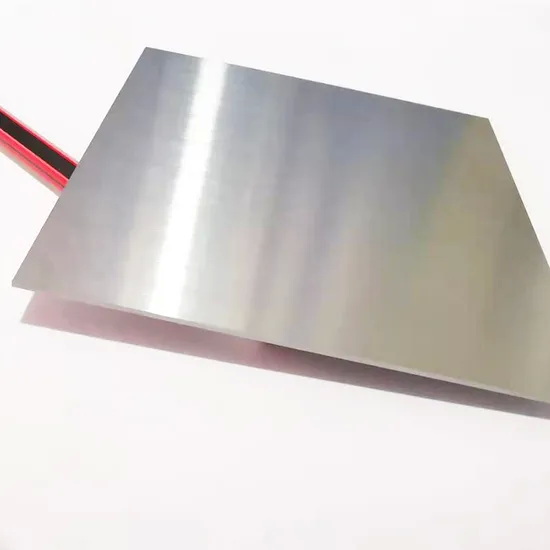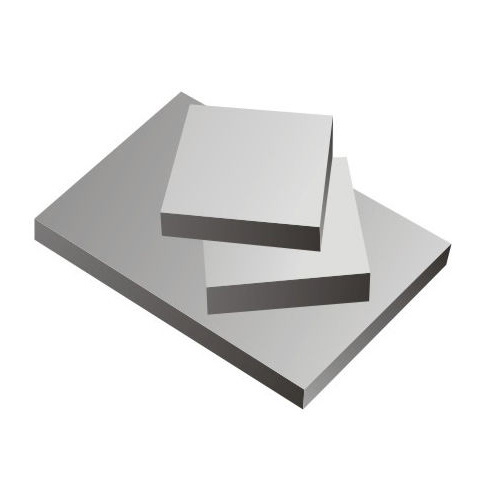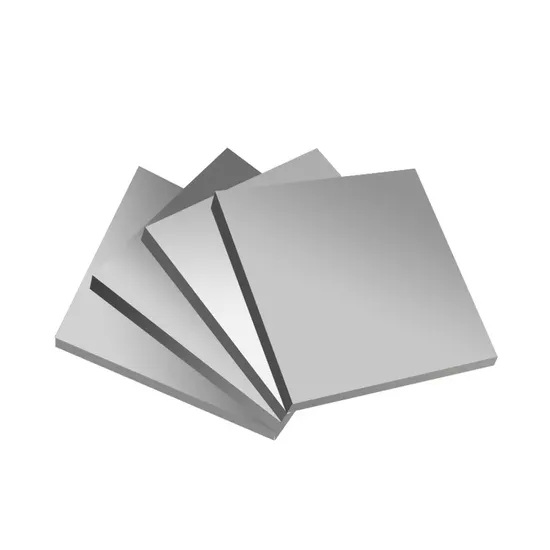Content Menu
● Introduction to Carbide Plates
● Key Properties and Benefits
● Manufacturing Processes for Carbide Plates
● Core Applications Across Industries
● Top Carbide Plate Manufacturers and Suppliers in the United States
>> 1. JADCO Manufacturing Inc.
>> 2. SSAB (Duroxite® series)
>> 3. General Carbide Corp.
>> 4. Foothills Steel
>> 5. Refax, Inc.
>> 6. Waldun
● Market Trends and Outlook
● How to Choose a Carbide Plate Manufacturer or Supplier
● Advances in Carbide Plate Technology
● Environmental and Sustainability Considerations
● Conclusion
● Frequently Asked Questions (FAQs)
>> 1. What are the main types of carbide plates offered by U.S. manufacturers?
>> 2. How are carbide plates manufactured in the U.S.?
>> 3. Which industries rely most heavily on carbide plate manufacturers?
>> 4. What factors influence the quality and cost of carbide plates?
>> 5. How do OEM services add value for overseas clients?
Carbide plate manufacturers and suppliers play a fundamental role in the U.S. industrial sector, supplying OEMs, distributors, and end-user industries with wear-resistant solutions tailored to extreme environments. This article explores the U.S. carbide plate landscape, including manufacturing processes, applications, market trends, and highlights of industry-leading manufacturers and suppliers. Alongside extensive explanations, you will find instructive descriptions for a clearer understanding.

Introduction to Carbide Plates
Carbide plates—primarily made from blends like tungsten carbide or chromium carbide—are engineered to withstand severe wear, high temperatures, and corrosive environments. They are key components in sectors such as mining, construction, oil and gas, metalworking, and beyond. U.S. carbide plate manufacturers and suppliers offer a wide array of custom products, supporting OEM projects and direct industrial applications. Their ability to provide high-wear resistance solutions has made them indispensable in equipment longevity and operational efficiency.
Key Properties and Benefits
Carbide plates are recognized for their exceptional performance characteristics:
- Exceptional wear resistance: Outlasting traditional steels by orders of magnitude, carbide plates minimize downtime and reduce replacement frequency.
- Excellent hardness: Typically ranging from 550 to over 600 BHN on the Brinell scale, their hardness defies deformation during abrasive or impact-intensive tasks.
- Thermal stability: Carbide plates maintain their physical and chemical properties even at elevated temperatures, making them vital for high-heat applications such as cutting and drilling.
- Corrosion resistance: The inherent chemical stability resists many acids, alkalis, and oxidizing agents, which protects equipment in aggressive environments.
- Customization: OEM-focused factories in the U.S. can produce plates in varied thicknesses, sizes, surface finishes, and specialized coatings, tailored to customer specifications.
These features contribute to long service life and substantial cost savings across industries bulky with abrasive and corrosive challenges.
Manufacturing Processes for Carbide Plates
Producing carbide plates involves sophisticated techniques that combine metallurgy with precision fabrication:
- Powder Blending and Pressing: High-purity powders of tungsten or chromium carbide are mixed with metal binders such as cobalt. This blend is uniformly pressed into desired shapes, known as green compacts.
- Sintering: These compacts are fired at temperatures often exceeding 1400°C, fusing the powders to achieve maximum density and hardness. Controlled atmospheres prevent oxidation during this phase.
- Overlay Welding (for Chrome Carbide Overlay Plates): For plates requiring a hard surface overlay, a steel base plate is coated with a chromium-carbide rich layer through processes like submerged arc welding or plasma transferred arc welding. This creates a metallurgical bond between the overlay and substrate, producing wear-resistant composite plates.
- Finishing and Quality Control: The plates undergo grinding to precise thickness, ultrasonic inspection, and sometimes additional heat treatments. Custom cutting methods such as waterjet cutting or CNC machining provide dimensional accuracy required by OEM clients.
These processes ensure consistent mechanical properties, dimensional tolerance, and surface quality.
Core Applications Across Industries
Carbide plate manufacturers and suppliers serve many demanding sectors by extending tool and equipment lifespans and improving operational efficiency. Key industries and applications include:
| Industry | Application |
| Metalworking | Cutting tools, forming dies, punches |
| Mining | Wear liners for crushers, shovel components, drill rigs |
| Construction | Chutes, buckets, mixer blades, concrete mixers |
| Oil & Gas | Drilling bits, pipe cladding, fracturing equipment |
| Energy | Power plant wear liners, coal crushers |
| Agriculture | Tillage tools, blades, and reinforcements |
| Aerospace | Precision wear parts requiring extreme durability |
| Medical Devices | Surgical tools with wear-resistant edges |
These applications highlight carbide plates' critical role in improving wear life, reducing maintenance costs, and maximizing equipment uptime.
Top Carbide Plate Manufacturers and Suppliers in the United States
1. JADCO Manufacturing Inc.
Located in Harmony, Pennsylvania, JADCO specializes in chrome carbide overlay (CCO) plates. Their CHROMEWELD™ product line offers ultra-thin yet consistent overlays with excellent wear resistance. JADCO's in-house R&D and manufacturing control ensure tailored solutions for mining, steel, recycling, and power generation industries. Custom sizing and OEM collaboration are core strengths.
2. SSAB (Duroxite® series)
SSAB's North American operations supply the popular Duroxite® series of CCO plates, including Duroxite® 100/101 and more complex overlays like Duroxite® 200/201. Renowned for uniform overlay microstructure and outstanding abrasion resistance, SSAB serves quarries, concrete plants, recycling facilities, and other heavy abrasion applications. Their customized plates meet diverse operational requirements.
3. General Carbide Corp.
Pennsylvania-based General Carbide produces custom tungsten carbide wear parts and plates targeting tooling and aerospace sectors. Their precision manufacturing solutions support machining, energy, and specialized industrial markets with strict tolerance and quality expectations.
4. Foothills Steel
Operating in both Canada and the USA, Foothills Steel's advanced welding technology produces high-quality chrome carbide overlay plates. Their significant annual production capacity supports mining, aggregates, and heavy construction industries. Their OEM services include custom fabrication and design consultancy.
5. Refax, Inc.
Refax specializes in custom fabrication and welding of chrome carbide wear plates. Their products and services cater to maintenance needs and OEM requirements, with a strong focus on abrasion resistance and delivery flexibility.
6. Waldun
As a global supplier with presence in the U.S., Waldun offers tungsten carbide plates and rapid custom orders. Their quick turnaround and adherence to stringent specifications make them a preferred supplier for demanding industries requiring high toughness and wear resistance.

Market Trends and Outlook
The carbide plate market in the United States is expanding steadily, driven by several key factors:
- Market Growth: Globally, the cemented carbide plate market was valued at $1.5 billion in 2023 and is projected to reach $2.3 billion by 2032 with a 5% compound annual growth rate (CAGR). This growth is propelled by increasing demand from metal-cutting industries, mining, and construction sectors.
- OEM Customization Demand: Manufacturers increasingly face requests for highly customized carbide plate solutions with specific thicknesses, overlays, and chemical compositions. Speed to market and quality assurance remain top priorities.
- Technological Innovation: Advancements in powder metallurgy, isostatic pressing, robotic welding, and coating technologies boost plate performance and streamline production. High-precision methods improve overlay uniformity and plate durability.
- Global Supply Chain Influence: While many U.S. manufacturers serve domestic needs, global supply chain shifts encourage more reshoring of carbide plate production for improved responsiveness and quality control.
- Sustainability Efforts: Environmental regulations inspire manufacturers to reduce scrap, recycle materials, and decrease energy consumption in production, contributing to greener manufacturing practices.
How to Choose a Carbide Plate Manufacturer or Supplier
Selecting a reliable carbide plate manufacturer or supplier is crucial for ensuring product quality and operational success. Considerations include:
- OEM Experience: Prefer manufacturers with proven track records in serving major OEMs and handling large-scale industrial projects to leverage their expertise.
- Material Expertise: In-house R&D capabilities for developing new proprietary carbide blends and overlay compositions help tailor products for specific applications.
- Production Flexibility: The ability to handle both high-volume orders and prototype jobs ensures responsiveness to changing market needs.
- Certifications and Standards: Compliance with ISO quality systems, product traceability, and rigorous testing protocols enhances reliability.
- Technical and After-Sales Support: Professional guidance during product selection, engineering consultation, and customer service responsiveness add significant value.
- Delivery Reliability: Timely fulfillment is essential, particularly for industries with tight maintenance schedules and production deadlines.
Advances in Carbide Plate Technology
In recent years, research and development efforts have brought cutting-edge advancements to carbide plate production:
- Nano-structured Carbides: The integration of nanomaterials in carbide blends enhances hardness, toughness, and wear resistance beyond traditional limits.
- Hybrid Coatings: Combining carbide layers with ceramic or polymer coatings improves surface characteristics like corrosion resistance and impact absorption.
- Additive Manufacturing: Experimental use of 3D printing techniques for carbide composites is emerging to produce complex geometries previously unobtainable by conventional methods.
- Enhanced Welding Processes: Innovations like laser cladding and plasma transferred arc welding offer superior overlay uniformity and reduced heat-affected zones, increasing plate reliability.
- Smart Wear Monitoring: Embedded sensors and IoT-enabled plates under development can provide real-time wear data to optimize maintenance schedules and prevent unexpected downtime.
Such innovations promise future carbide plates that are more durable, efficient, and adaptable to evolving industrial challenges.
Environmental and Sustainability Considerations
Sustainability concerns increasingly influence carbide plate manufacturing:
- Material Recycling: Many manufacturers recycle scrap carbide powders and overlay remnants, reducing raw material consumption.
- Energy Efficiency: Modern sintering and welding equipment incorporate energy-saving designs and optimize thermal cycles to lower carbon footprints.
- Waste Management: Proper handling of hazardous materials like cobalt binders and chromium overlays ensures regulatory compliance and environmental protection.
- Lifecycle Assessment (LCA): Evaluating the overall environmental impact from material sourcing to plate end-of-life informs greener decision-making.
- Sustainable Supply Chains: Sourcing raw materials from ethically responsible suppliers and minimizing transportation impacts also align with corporate social responsibility goals.
By integrating sustainability principles, carbide plate producers meet both industrial performance standards and environmental expectations.
Conclusion
The United States boasts a vibrant carbide plate manufacturing ecosystem that supports a broad spectrum of industries requiring robust, wear-resistant components. From mining to aerospace, carbide plates deliver unmatched durability and operational efficiency. Leading manufacturers distinguish themselves through advanced production methods, custom OEM services, and innovative materials technology. Alongside rapidly growing market demand, ongoing technological and sustainability advancements promise an exciting future for carbide plate solutions. Businesses seeking reliable wear-resistant plates will find ample high-quality options available to meet diverse challenges and improve equipment lifespan dramatically.

Frequently Asked Questions (FAQs)
1. What are the main types of carbide plates offered by U.S. manufacturers?
U.S. manufacturers mainly supply tungsten carbide plates, chromium carbide overlay (CCO) plates, and complex engineered carbide overlay plates. Each type is optimized for balance of hardness, wear resistance, and thermal stability depending on application demands.
2. How are carbide plates manufactured in the U.S.?
Carbide plates are produced via powder metallurgy including blending, pressing, and sintering, or by welding carbide-rich overlays onto steel bases. The final steps involve precision finishing, testing, and quality control tailored to OEM criteria.
3. Which industries rely most heavily on carbide plate manufacturers?
Mining, metalworking, construction, oil and gas, energy, agriculture, aerospace, and medical device manufacturing are some of the primary industries using carbide plates extensively for wear-resistant tooling and components.
4. What factors influence the quality and cost of carbide plates?
Quality and cost depend on carbide composition, overlay thickness and uniformity, base metal quality, manufacturing precision, and supplier expertise. Higher-end custom products typically come with premium pricing justified by performance benefits.
5. How do OEM services add value for overseas clients?
OEM manufacturers provide tailored design, prototyping, quality assurance, volume production, and logistical support to meet specific client requirements. This flexibility and reliability help global brands and wholesalers maintain competitive advantage.
















